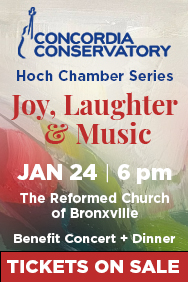From the Mayor: Overview of Key Items in New York State Budget

By Mary Marvin, Mayor of Bronxville
May 10, 2023: The New York State budget was passed one month overdue with a record $229 billion in spending.
Most importantly, in terms of the effect on our Village, the two housing proposals failed to receive any traction in the budget and were eliminated in their entirety. To recap, there was a so-called Phase I, where we were required to build approximately 75 new units every three years, but in a fatal flaw of the legislation, they did not have to be affordable in any way.
The second part and the one that was truly incomprehensible was the Transit Oriented Development (TOD) Plan, which would have required the Village to build 10,000 new units in a community that currently has 2,650 housing units or risk developers being able to come in and summarily avoid all planning and zoning regulations as well as any environmental review.
Needless to say, those who understood the long-term ramifications on aging infrastructures, school populations, the need for permeable surfaces because of the incredible flooding problem in lower Westchester, and the desire for open space prevailed in quashing this initiative.
The important point to note is that those of us who objected and vehemently so, to what considered some of the most incredibly flawed legislation in my time in government, did not reject in any way the concept that more workforce housing is needed throughout the county. We just felt this was a draconian, punitive, and most importantly, unrealistic and highly unsustainable plan.
That being said, none of us like to be naysayers without being constructive and we have offered to be part of the solution with the hope that going forward, the Governor’s office may actually speak to communities, especially small villages and towns that live around transit stations and understand the impact at our level.
The proposal was truly a one size fits all solution that was fatally crafted to attempt to work uniformly for major cities of 200,000 and communities with 6000 people.
The big winners in this budget were school districts and I am not well-versed enough to know the impact on our district at this juncture, but public school districts statewide got a whopping $2.7 billion increase in foundation aid, which represents a 13% increase from the last budget. An issue on the table were charter schools and in a particularly contentious debate, legislators re-authorized the charters for 22 schools, 14 of them in New York City while the Governor was looking for 100 new charter licenses. The United Federation of Teachers forcefully opposed the Governor’s proposal.
Of other significant impact, minimum wage will increase to $17 per hour in New York City, Long Island and Westchester County over the next three years and $16 in all counties further north. For many downstate lawmakers eager to boost the pay of low wage workers struggling with high urban costs and inflation, the bump came four dollars short of what they advocated, but for upstate farmers dealing with soaring labor costs due to the higher overtime pay threshold passed in last year‘s budget, it was much too much. Quite different perspectives indeed. As point of reference, since the last minimum wage increase in 2016, New York has lost over 1100 dairy farms.
The Governor and Legislative agreed-upon budget also allows pharmacists to dispense over the counter contraception and ensure access to medication abortion remedies at all public colleges and universities.
The state will also have new tools to tackle the proliferation of shops selling marijuana without a license with the state taxing authorities now having the authority to inspect any business location, including vehicles, that are selling cannabis. The state regulators of the legal market place are saying these powers are what was needed to effectively crack down on unlicensed shops.
The state also passed a new law that will bar the use of fossil fuels for heating and cooking in new construction. The law, the first statewide ban in the nation, will go into effect for buildings under seven stories beginning in 2026, with larger buildings needing to comply by 2029. It will not affect gas stoves in existing homes and includes exemptions for manufacturing, some emergency equipment, generators, and hospitals. A companion measure also allows the New York State Power Authority to build, own and operate renewable energy facilities to help New York meet the goal of reducing admissions by 85% by 2015.
In light of the MTA ‘s pending $3 billion deficit, lawmakers agreed to a onetime payment of $300 million out of the state budget and $165 million annually from the New York City budget.
It also included an increase in payroll taxes on large businesses based in New York City, which is expected to yield $1.1 billion in combination with tax revenues from casinos that are due to open in the near future.
The Governor hoped to make New York the third state to ban menthol cigarettes and other flavored tobacco products following in the footsteps of Massachusetts and California, exposing the argument that the minty tasting cigarettes are a health scourge in the black community in which they are primarily marketed.
Black community leaders were split on the proposal but did accept a separate proposal to raise the cigarette tax by one dollar per pack.
On the healthcare front, hospitals and nursing homes received increases in what they viewed as outdated Medicaid reimbursement rates for their services, though not nearly as much as they sought to keep pace with their cost increases.
The rates for hospitals will rise by 7.5% for inpatient services and 6.5% for outpatient. These institutions have not had an increase since 2007 and were looking for an increase in the 10% range.
Affecting us on the Westchester County level is the provision that the state will withhold some federal funding for Medicaid that is shared with all 57 counties in New York to pay for the health insurance program. Governor Hochul proposed keeping $625 million in aid from the counties but made a concession by spacing out the funding change so that counties will absorb $405 million of the $625 cost mandate this fiscal year with a $270 million dollar bill due in the next budget. This will most certainly cause an increase in Westchester county taxes.
For the third time since 2019, New York has amended its bail laws. This year’s change removed the language that requires judges to set the “least restrictive conditions necessary to ensure defendants did not flee prosecution” instead, giving them the authority to choose what they believe is, “necessary to reasonably assure defendants return to court”, the standard they had before the 2019 changes.
A great deal can change in the approximately one month remaining in the legislative session so be vigilant in following the proceeding for as Mark Twain said “No man’s life, liberty or property are safe while the legislature is in session.”
Photo courtesy Village Hall
Government & History Directory
Bronxville is a quaint village (one square mile) located just 16 miles north of midtown Manhattan (roughly 30 minutes on the train) and has a population of approximately 6,500. It is known as a premier community with an excellent public school (K-12) and easy access to Manhattan. Bronxville offers many amenities including an attractive business district, a hospital (Lawrence Hospital), public paddle and tennis courts, fine dining at local restaurants, two private country clubs and a community library.
While the earliest settlers of Bronxville date back to the first half of the 18th century, the history of the modern suburb of Bronxville began in 1890 when William Van Duzer Lawrence purchased a farm and commissioned the architect, William A. Bates, to design a planned community of houses for well-known artists and professionals that became a thriving art colony. This community, now called Lawrence Park, is listed on the National register of Historic Places and many of the homes still have artists’ studios. A neighborhood association within Lawrence Park called “The Hilltop Association” keeps this heritage alive with art shows and other events for neighbors.
Bronxville offers many charming neighborhoods as well as a variety of living options for residents including single family homes, town houses, cooperatives and condominiums. One of the chief benefits of living in “the village” is that your children can attend the Bronxville School.
The Bronxville postal zone (10708, known as “Bronxville PO”) includes the village of Bronxville as well as the Chester Heights section of Eastchester, parts of Tuckahoe and the Lawrence Park West, Cedar Knolls, Armour Villa and Longvale sections of Yonkers. Many of these areas have their own distinct character. For instance, the Armour Villa section has many historic homes and even has its own newsletter called “The Villa Voice” which reports on neighborhood news.
Link to Village of Bronxville One Square Mile Monthly Newsletter
Village of Bronxville Administrative Offices
337-6500
Open 9:00am - 4pm excluding holidays and weekends
Bronxville Police Department
337-0500
Open 24 hours
Bronxville Parking Violations
337-2024
Open 9:00am - 4pm excluding holidays and weekends
Bronxville Fire Deparment
793-6400












